What could be more enjoyable than caring for flowers? Yes, indeed, it is one of the most interesting parts of gardening. Orchids in particular are a joy to look after. These flowers are recognized as some of the most beautiful and delicate in the world.
However, it is important to understand what are the best pots for orchids if you wish to protect your beautiful flowers from death before they don’t even begin to grow.

What are the best pots for orchids, considering two main types of flower
Of course, there are a great many varieties of orchids, but only three types are referred to as progenitors. Accordingly, each of these types requires specific pots based on their materials, depth, and ventilation. These are basic characteristics, but additional characteristics can be included. So, orchids are divided for three main types:
- epiphytic orchids;
- lithophytes;
- terrestrial orchids.
If you want to get lush color from your plants pointing out orchid health, be sure to choose the best orchid pot and potting material, otherwise, the flower might become diseased or even die.
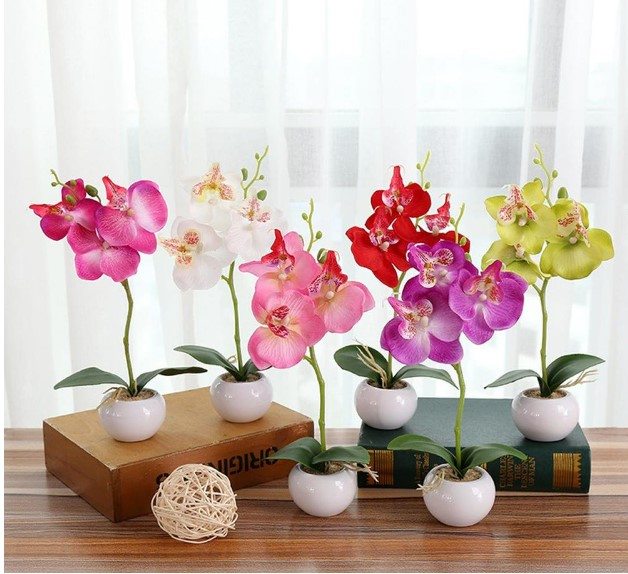
What types of orchid pots are on the market right now
There is a large variety of orchid pots on the market, made of plastic or ceramic, glass, terra cotta, transparent and non-transparent elements. If you look at the types of orchids that exist, you will find that they have different growth forms.
Most orchids tend to be epiphytes, growing on tree branches in their natural state, with roots completely in the air to take advantage of the prevailing humidity.
But this is not the only type of growth. There are orchids roots growing in the ground (terrestrial) and others that grow between or on rocks (lithophytes).
Each has different needs, so ideally you should check what type of orchid you have and choose the most appropriate pot to care for it.
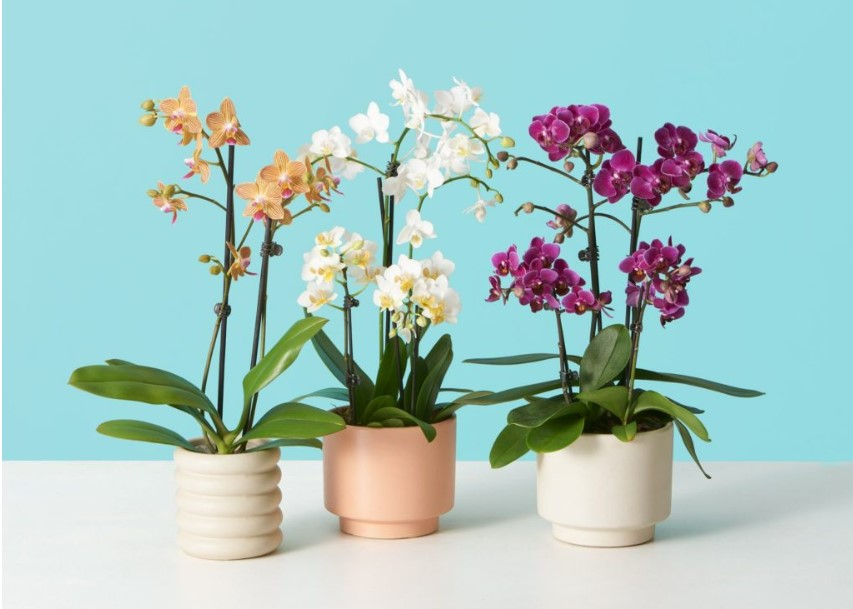
Example of a plastic pot and peculiarities of growing orchids in it
There is a widespread false myth that all orchid pots must be transparent. This is because it makes photosynthesis easier, but this is not true. The transparent plastic pot allows you to observe what happens around the roots and therefore better control the orchid’s watering needs.
Note: If the roots look whitish, the orchid should be watered. Green roots are a sign that the orchid is perfectly hydrated.
One of the orchids that grow well in Mkono plastic 7-inch double pots is phalaenopsis. This is the perfect combination, when watering the orchid, evaporation of excess humidity, and a designated open space for the roots to easily shorten unwanted parts of the plant.

The cattleya orchid is a lover of clay pots
There are some varieties of orchids that like clay pots, such as the cattleya. They feel comfortable in these pots because it dries faster than another orchid pot. However, there is one problem with repotting – it is more difficult to do.
Orchids need to change pots regularly.
Because the substrate for orchids is very thick, the roots are in contact with the soil for a long time.
These types of pots can cause the roots to stick to the pot, making transplanting very difficult. A similar look can be achieved with terra cotta or ceramic pots, which are sometimes finished on the inside and have a smooth surface, making transplanting easier. In general, clay pots are more reliable and provide better growth conditions for orchids than clear plastic pots.
Ceramic pots are widely available in the Atri Ceramic Orchid Pot with Holes line, providing good air circulation and easy repotting. The main disadvantage of terra cotta pots is the intense evaporation of moisture near heating devices.

Ceramic pots for orchids and their features
The ceramic pot is an alternative to another orchid pot. They retain wetness well and are resistant to all surfaces. Orchids love this type of pot.
If the room is always warm, such a pot is the best choice, but in winter, it is not recommended to put an orchid on a window sill.
Orchids look especially spectacular in Chinese ceramic orchid pots. They are represented by vases with holes. In such form, the roots of the flower perfectly breathe, even if the substrate quickly dries out.
The disadvantages of clay orchid pots are that they are hard and can be affected by bacteria, algae or mosses without your notice.
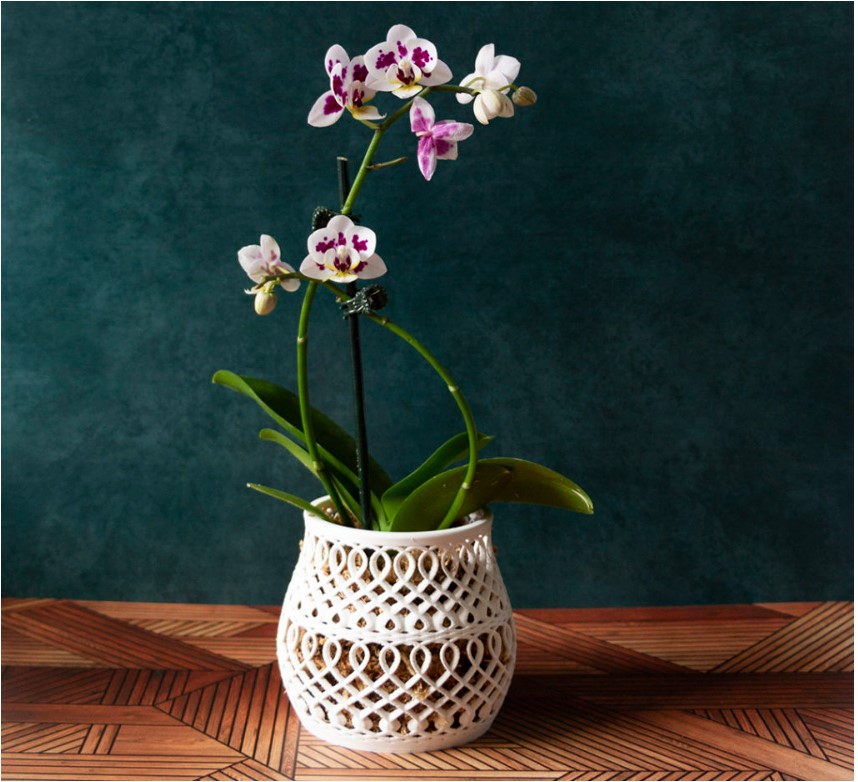
Wanda orchids and hanging basket – the perfect combination
Finally, there are hanging baskets, perfect for orchids like the Wanda, whose roots cannot be placed in a pot. Not that you can’t plant them in a plastic orchid pot.
However, it is in a basket that achieves optimal growth.
Usually, they are made of bound wood, but you can use other types of baskets, or you can avoid using a pot for your orchid at all and hang the plants by the stem, leaving the roots completely in the air.
If you want to surprise your loved ones or recreate an unparalleled interior of your home, PANWA Handmade Basket is the best solution currently on the market.
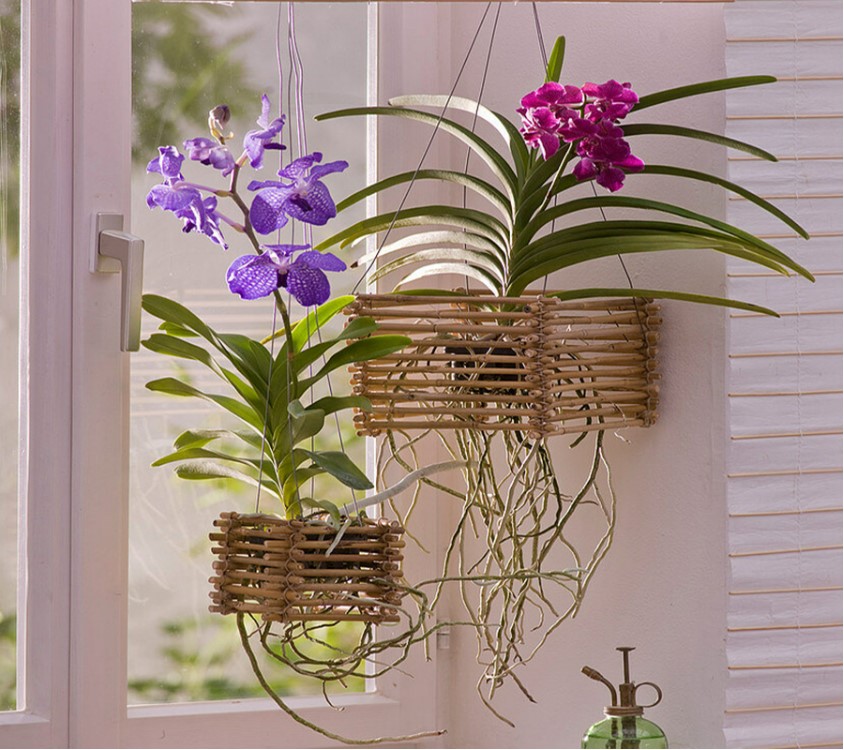
Transparent pots – their advantages and disadvantages
A great advantage of transparent pots is that they provide a good overview of the substrate and humidity. This makes it much easier to control the watering of the orchid. Another advantage you should mention is that the plastic orchid pots can be easily pierced, thereby providing the orchid with the necessary ventilation without any problems.
The problem, however, is the low weight of the pot, as it can be dangerous if it moves or falls. For this reason, most often plastic orchid pots are placed inside other decorative pots so that you can take the pot out inside to control the moisture, and the outer pot gives it the necessary stability as well as aesthetic appeal.
Zirka Clear Orchid pots and Repotme Slotted Clear Orchid Pot Set are some of the best orchid pots in this class.
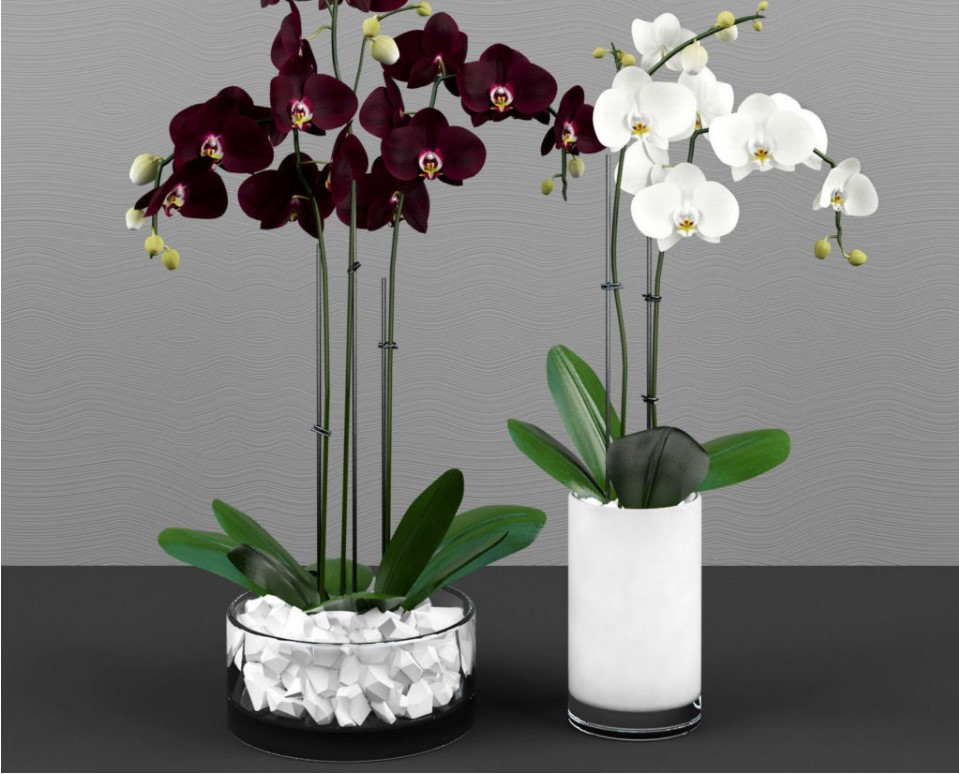
Glass pots can replace decorative pots when it’s necessary
Glass pots for orchids are ideal, so if you want to buy clear orchid pots, glass pots are the best choice. The clear plastic pot allows you to see what’s going on inside, so it’s easier to monitor the moisture and the condition of your orchid roots. It uses a thick layer that provides a drainage hole. In the same way as with plastic pot.
But also, glass is a heavier material, so it gives the pot the necessary stability, so pots for decorative purposes are no longer needed. Consider the Pennington Glazed Orchid Pot 4.75, providing moisture control along with great design.
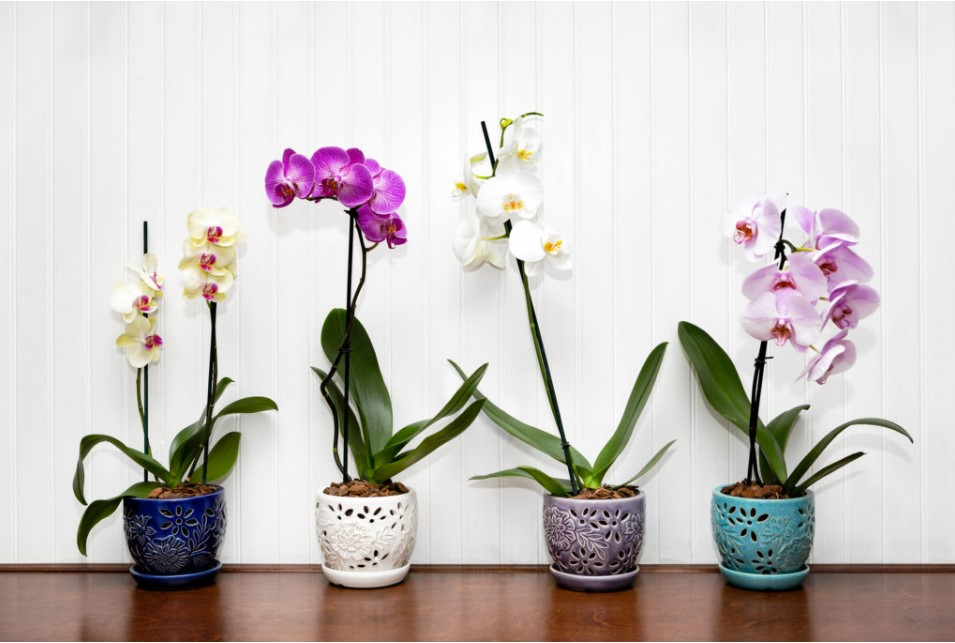
What are perforated pots for
The orchid pot with drainage holes is designed for air circulation and remove excess water through the holes. It is also easy to see how the orchid’s roots are doing and the overall condition of the soil. When buying, make sure the drainage holes are not too large and keep the orchid out of the water.
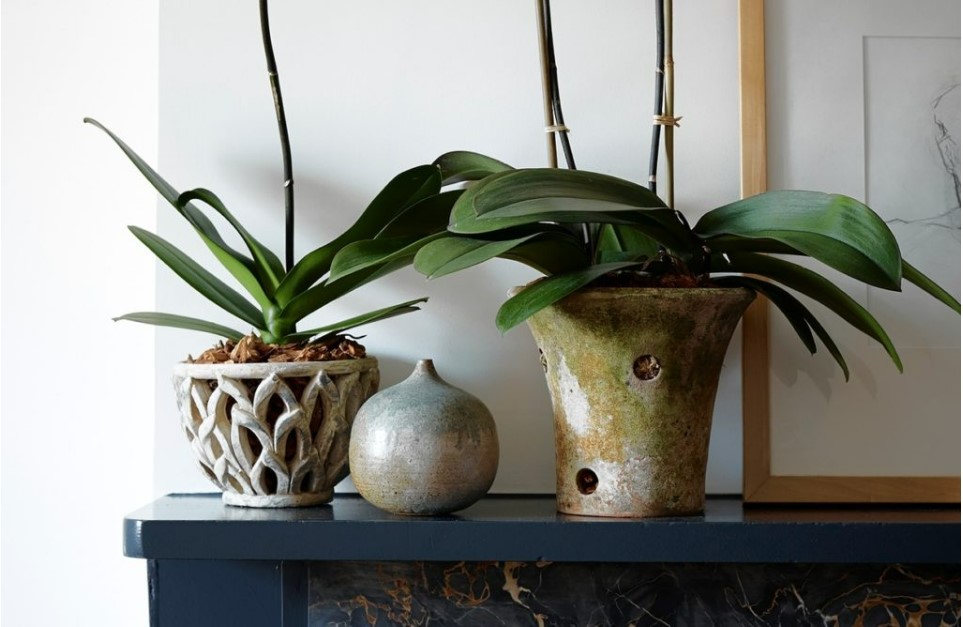
How to disinfect a pot without harming orchid
An effective way to disinfect is to use hot water. It can be used by pouring it into a pot or simply immersing the pot in boiling water. Some orchid enthusiasts may add drops of disinfectant – bleach or chlorine – to make the process more effective. This will also depend on using plastic or burnt pots.
Note: you should not transplant an orchid in full bloom. This will lead to great harm, as this is the most delicate place of the flower. The slight change in the pH of the substrate will kill it.
By following these simple rules, you won’t damage your orchid roots, and you won’t spend a lot of time transplanting the flower.
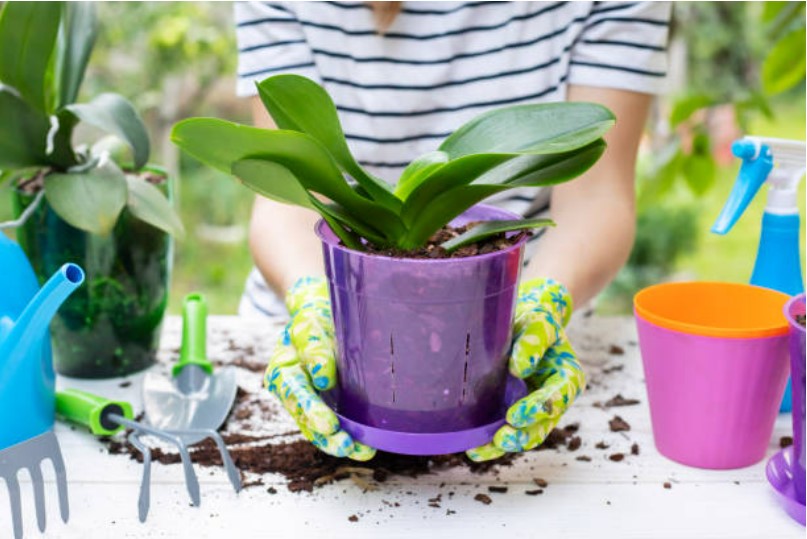
How to choose the right pot depth
Another important aspect to consider when choosing an orchid pot for plants is the future size they can reach. This will not only help you to choose them correctly, but above all, it will contribute to the normal development of the orchid plants.
If you consider plants that reach a height of about 50 centimeters, a pot with a diameter of 30 centimeters will be enough. If we want to make sure that our plants can reach a height of a meter, then ideally we should plan for a pot with a diameter of around 50 centimeters.
For plants that can reach a height of two meters, an orchid pot over 60 centimeters should be regarded.
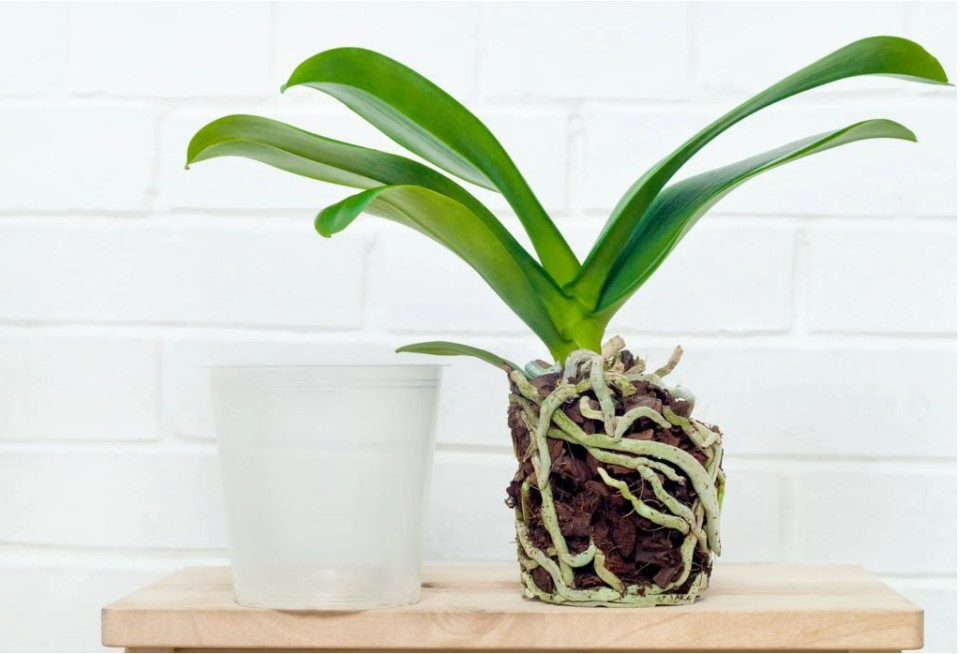
What type of pot to choose for transplanting an orchid
To transplant an orchid, it is advisable to choose terra cotta or a decorative pot. First, you should make sure that there are some drainage holes for the plant to breathe.
Also consider the fact that leaving the orchid in a terra cotta pot for a long time is not a good idea because the transplanted plant can grow quickly and will need a larger pot. It should be kept in mind that the decorative pot is mainly used only for transplanting.
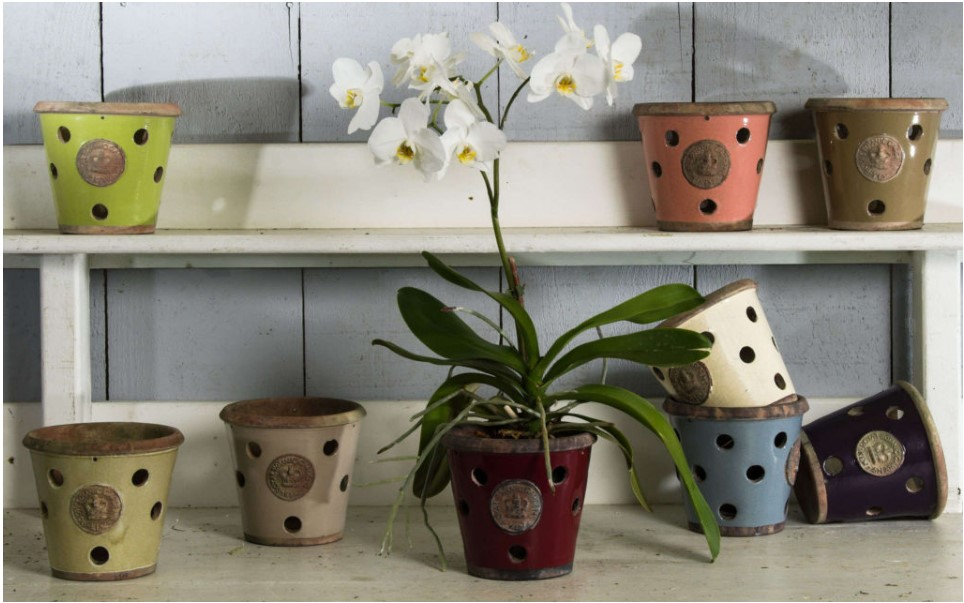
Where to put an orchid at home
Orchids like light, but not too bright and in small amounts. The best idea is to place the orchid near a window or door where the light will fall on the plant for about 6-8 hours a day. The orchid should not be placed in direct sunlight. Balconies and terraces are also a great option.
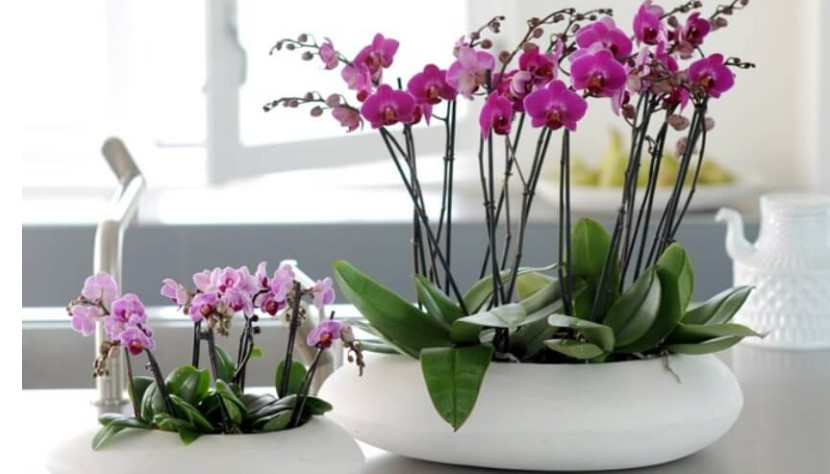
Ideal conditions for flower longevity and health
If you want your orchid to be in good shape, there are certain rules to follow. These include:
- watering at least once a week;
- keep the temperature around 71.6° F (22 °C) during the day and at least 60.8° F (16 °C) at night;
- optimum humidity of at least 40%;
- sunlight at an oblique angle.
The orchid is not a very capricious plant, and the above conditions will be sufficient for orchids grown.
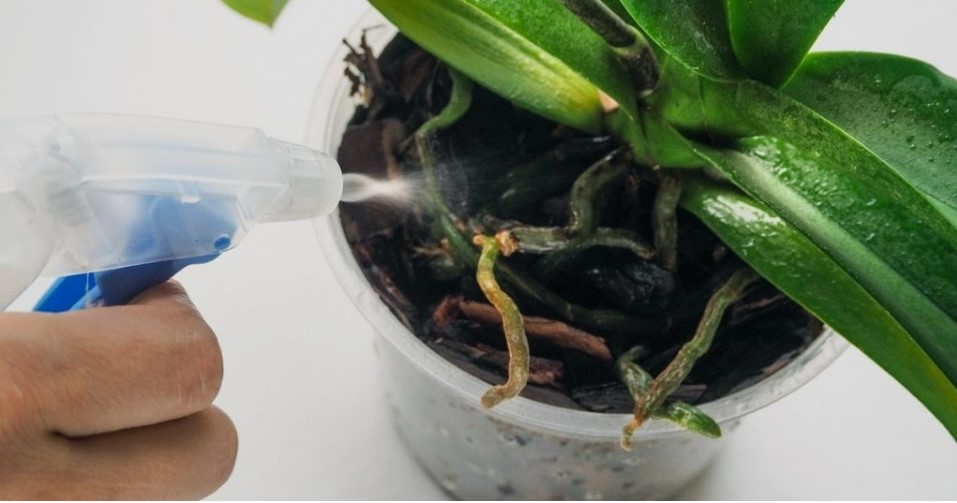
Even orchids sometimes need fertilizer
Orchids live fine without fertilizer, but sometimes they may need a little fertilizer for a variety of reasons. This can be soil depletion, insect damage, or support after flowering is complete.

Calcium nitrate and magnesium sulfate
For the perfect health of your plants, it is important to apply these two supplements regularly. The first is important for strengthening the cell walls of the orchid. It should be given once every two months at a concentration of 1 g/liter.
Magnesium sulfate is just as important.
Distribute it in the same concentration, alternating with the other each month.
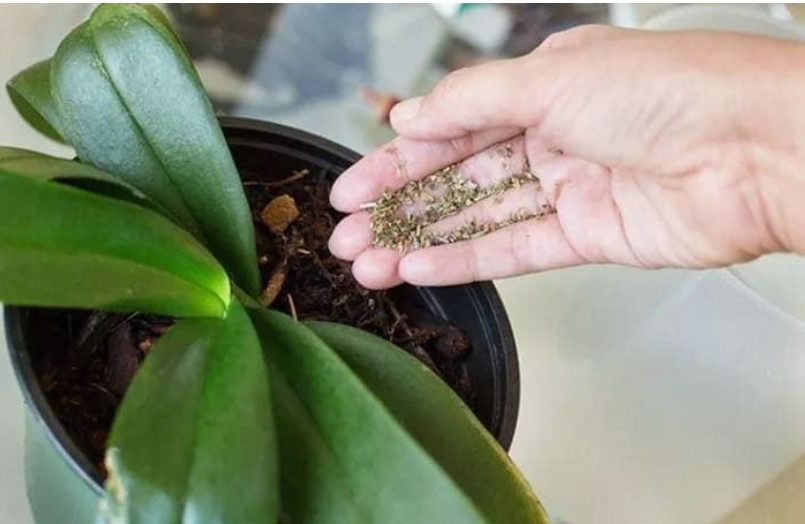
Fertilizer application by dipping method
Prepare a container and dissolve the fertilizer in warm water: insert the plant so that it absorbs all the substrate, but not the collar. Wait at least 15 minutes or until the roots turn a nice bright green color. Remove and drain the water.
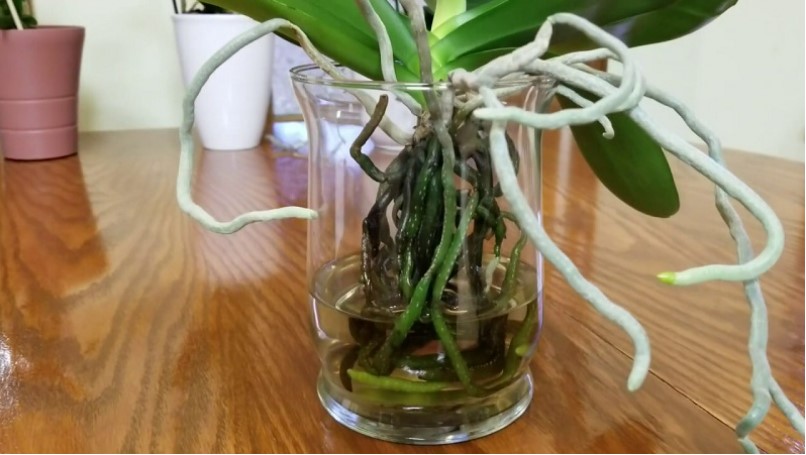
Conclusion: which pot to choose eventually
All of the pots presented in this article are good in their way for one type of orchid or another. Some are only suitable for transplanting, such as the clear plastic pot. If we look at the question from the point of view of universality, the conventional plastic pot is the first choice.
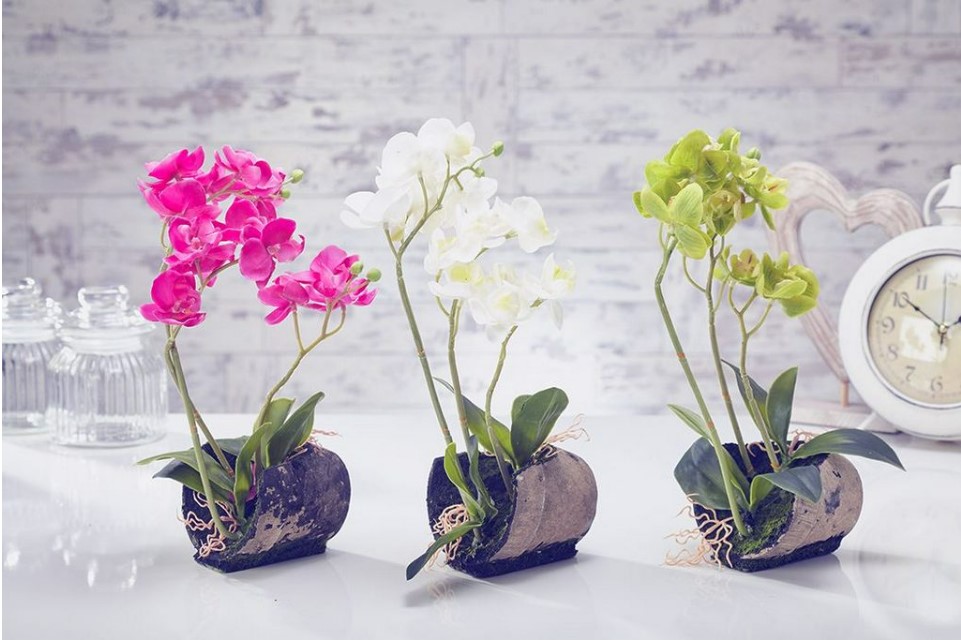
They’re suitable for both young and mature orchids. They can be used with both stunted and tall flowers. In addition, plastic pots are not too expensive. Nevertheless, experts never recommend buying an orchid pot at random, but always research the issue from several angles based on which orchid you own.
What is the best container for orchids?
Terracotta pots: breathable, but may dry out too quickly
Plastic pots: lightweight, come in various sizes and shapes, but do not allow for air flow
Baskets: good for orchids that prefer to be mounted, like Dendrobiums
Clear plastic containers: allow for viewing of the roots, ideal for observation and assessment of the health of the orchid
Do orchids like big pots or small pots?
Orchids generally prefer a pot that is slightly larger than their root system, not too big or too small. A pot that is too big can hold too much water and lead to root rot, while a pot that is too small can cause the roots to become cramped and stunted. The ideal pot size varies depending on the type of orchid, the growing conditions, and the size of the root system, so it’s important to choose a pot that is appropriate for your specific orchid.
Do orchids prefer clear pots?
Orchids generally do not have a preference for clear or opaque pots. The most important factor is the pot’s material and its ability to provide adequate drainage and air flow for the orchid’s roots. Some orchid growers prefer clear pots so they can monitor the roots and avoid overwatering, while others prefer opaque pots to limit exposure to light and keep the roots cooler. Ultimately, the choice between clear and opaque pots is a matter of personal preference and what works best for your orchid growing conditions.
Should orchids be misted with water?
Orchids can benefit from misting, especially if they come from high humidity environments. Misting provides a source of additional moisture, helping to raise the humidity around the plant and improve the health of the leaves and roots. It’s important not to mist too often or too much, as this can lead to mold and disease problems. It’s best to mist in the morning so the leaves have time to dry before nightfall.
Is it better to over or under water orchids?
Orchids should be neither over nor under watered. Over watering can lead to root rot and under watering can cause the plant to wilt and the leaves to turn yellow. The frequency of watering and the amount of water used will depend on several factors including the type of orchid, the potting mix, the temperature and humidity, and the amount of light the plant receives.
Why is my orchid growing so many air roots?
Orchids produce air roots to absorb moisture and nutrients from the air. Air roots are normal for many orchids, especially those that grow in epiphytic conditions. If an orchid has too many air roots, it may be a sign of high humidity or poor potting mix that retains too much moisture.
